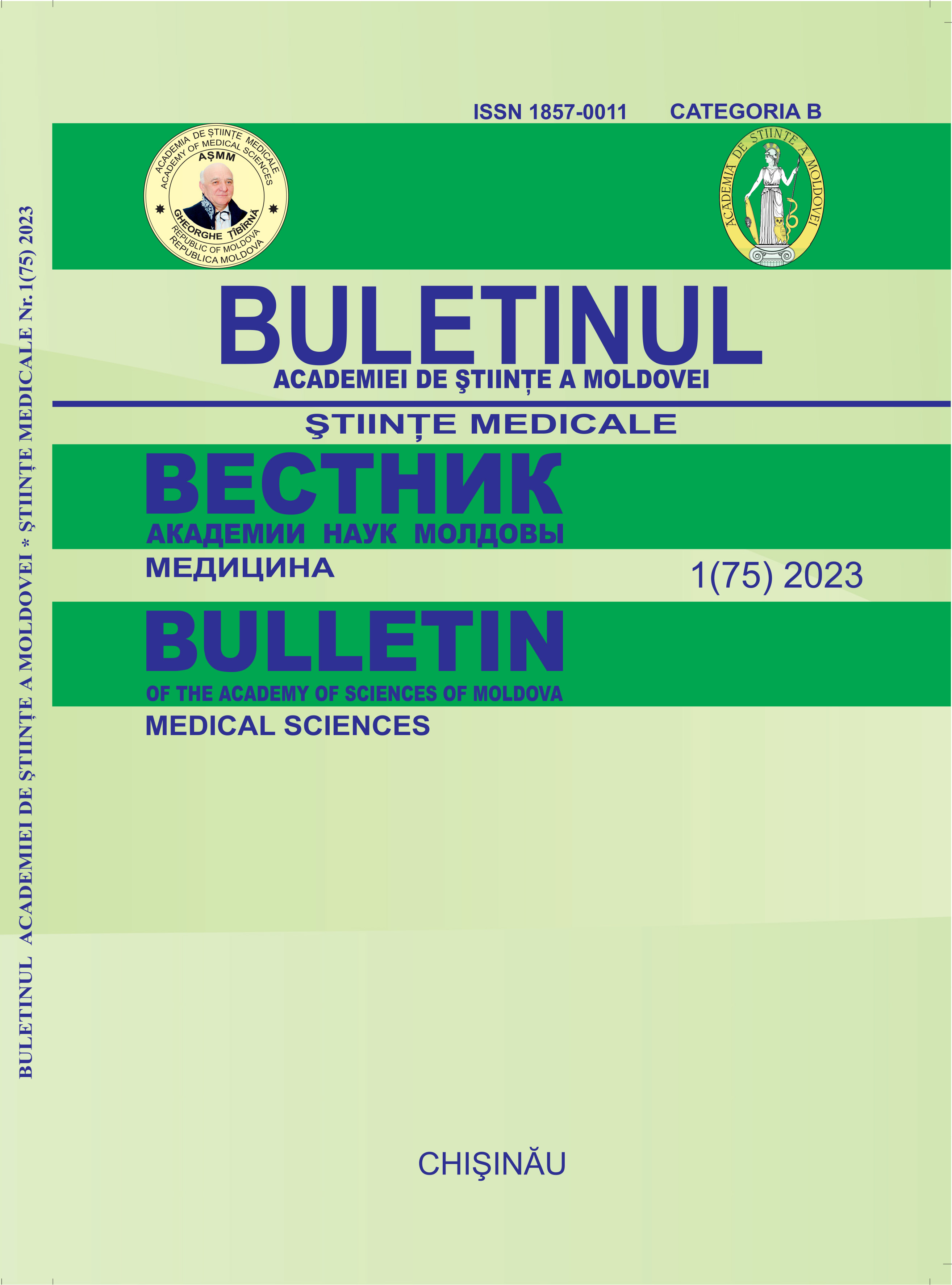EVENIMENTE DE SÂNGERARE APĂRUTE LA PACIENȚII CE ADMINISTREAZĂ DUBLA TERAPIE ANTIPLACHETARĂ (ASPIRINĂ + INHIBITOR P2Y12 - CLOPIDOGREL)
DOI:
https://doi.org/10.52692/1857-0011.2023.1-75.11Keywords:
percutaneous coronary intervention, dual antiplatelet therapy, bleeding eventsAbstract
In patients with coronary artery disease, percutaneous coronary interventions (PCI) are the mainstay of treatment for those presenting with acute coronary syndrome (ACS); PCI has also been widely adopted in patients with chronic coronary syndromes. Adjuvant pharmacotherapy, especially antithrombotic therapy, is the key to reducing local thrombotic complications and systemic ischemic events among patients undergoing percutaneous coronary interventions, but is inevitably associated with the occurrence of bleeding events. Prasugrel and ticagrelor are preferred over clopidogrel in patients with ACS in the absence of contraindications. Despite this, clopidogrel remains the most widely used. In this article, the bleeding events that occurred during 6-12 months of dual antiplatelet therapy (aspirin + P2Y12 inhibitor clopidogrel) in patients who underwent myocardial revascularization by PCI, the factors that favored their occurrence and the use of the prediction score were studied.
References
Knuuti J. et al. 2019 ESC Guidelines for the diagnosis and management of chron-ic coronary syndromes. European Heart Journal, 2020;41,407477;
Knuuti J. 2019 Ghidul SEC pentru diagnosticul şi managementul sindroamelor coronariene cronice. Romanian Journal of Cardiology, 2020;30(3);
Neumann F-J., Sousa-Uva M., Ahlsson A. et al. 2018 ESC/EACTS Guidelines on myocardial revascularization. European Heart Journal, 2019;40, 87–165;
Collet J-Ph. et al. 2020 ESC Guidelines for the management of acute coronary syndromes in patients presenting without persistent ST-segment elevation. European Heart Journal, 2021;42, 12891367. doi:10.1093/eurheartj/ehaa575;
Yusuf S. et al; Clopidogrel in Unstable Angina to Prevent Recurrent Events Trial Investigators. Effects of clopidogrel in addition to aspirin in patients with acute coronary syndromes without ST-segment elevation (CURE). N Engl J Med, 2001 Aug 16;345(7):494-502. doi: 10.1056/ NEJMoa010746;
Mehta SR. et al. Effects of pretreatment with clopidogrel and aspirin followed by long-term therapy in patients undergoing percutaneous coronary intervention: the PCI-CURE study. Lancet 2001;358: 527-33;
Chen ZM. et al. Addition of clopidogrel to aspirin in 45,852 patients w2ith acute myocardial infarction: randomised placebo-controlled trial. Lancet, 2005 Nov 5;366(9497):1607-21;
Scott SA. et al. Clinical Pharmacogenetics Implementation Consortium Guidelines for Cytochrome P450– 2C19 (CYP2C19) Genotype and Clopidogrel Therapy. Clin Pharmacol Ther., 2011;90:328–32;
Pelliccia F. et al. Risk Scores of Bleeding Complications in Patients on Dual Antiplatelet Therapy: How to Optimize Identifification of Patients at Risk of Bleeding after Percutaneous Coronary Intervention. J. Clin. Med., 2022; 11:3574. https://doi.org/10.3390/jcm11133574
Costa F. et al. PRECISE-DAPT Study Investigators. Derivation and validation of the predicting bleeding complications in patients undergoing stent implantation and subsequent dual antiplatelet therapy (PRECISE-DAPT) score: a pooled analysis of individual-patient datasets from clinical trials. Lancet, 2017;389(10073):1025-1034. doi: 10.1016/S0140-6736(17)30397-5. PMID: 28290994;
Genereux P. et al. Incidence, predictors and impact of post-discharge bleeding after percutaneous coronary intervention. J Am Coll Cardiol, 2015;66:1036–1045;
Yeh RW .et al., DAPT Study Investigators. Development and validation of a prediction rule for benefit and harm of dual anti-platelet therapy beyond 1 year after percutaneous coronary intervention. JAMA, 2016;315:1735–1749;
Watanabe H. al al. STOPDAPT-2 Investigators. Effect of 1-Month Dual An-tiplatelet Therapy Followed by Clopidogrel vs 12-Month Dual Antiplatelet Therapy on Cardiovascular and Bleeding Events in Patients Receiving PCI: The STOPDAPT-2 Randomized Clinical Trial. JAMA, 2019 Jun 25;321(24):2414-2427. doi: 10.1001/jama.2019.8145. PMID: 31237644; PMCID: PMC6593641;
Mehran R. et al. Cessation of dual anti-platelet treatment and cardiac events after percutaneous coronary intervention (PARIS): 2 year results from a prospective obser-vational study. Lancet, 2013;382:1714–1722;
Angiolillo D. et al. Antiplatelet therapy after percutaneous coronary intervention. EuroIntervention, 2022; 17:e 1371-e1396. DOI: 10.4244/EIJ-D-21-00904.
Downloads
Published
License
Copyright (c) 2023 Bulletin of the Academy of Sciences of Moldova. Medical Sciences

This work is licensed under a Creative Commons Attribution 4.0 International License.



